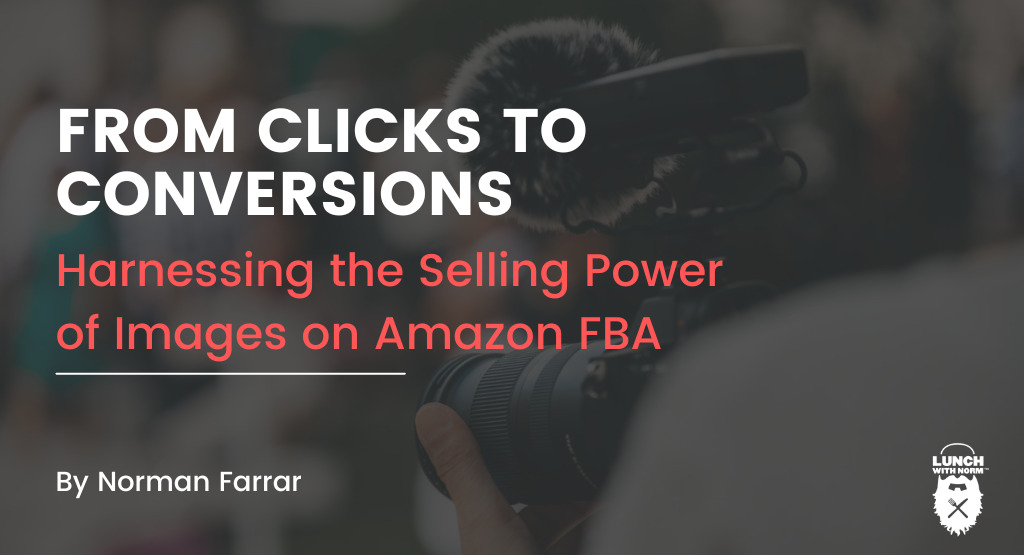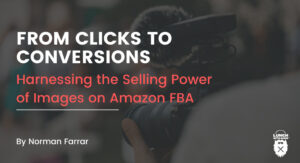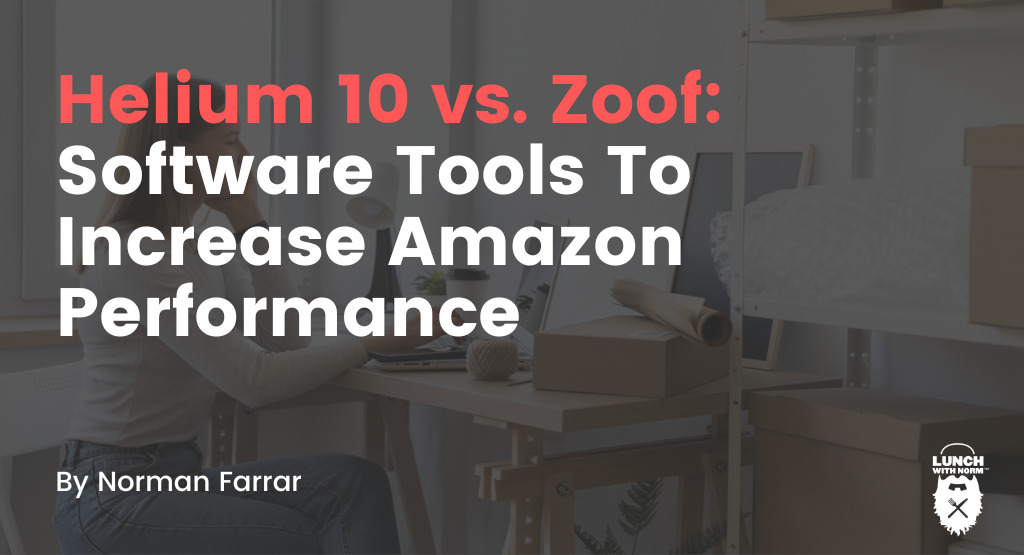min read Are you a business owner trying to increase sales on Amazon? Are you searching for an effective way for your product detail page to stand out amongst the
From Clicks to Conversions: Harnessing the Selling Power of Images on Amazon FBA
Are you a business owner trying to increase sales on Amazon? Are you searching for an effective way for your product detail page to stand out amongst the myriad of advertisements and products competing for customer attention?
Look no further than professional photography: creating high-quality images is one of the critical components to successful marketing, helping businesses capture more customers with compelling visuals that draw online shoppers deep into their product page.
In this blog post, we’ll discuss how powerful photos are at increasing conversion rates on Amazon and provide helpful tips from experienced photographers to ensure your product images make a lasting impression. People are visual creatures, and after reading this article, you’ll have all the knowledge needed to capitalize on excellent image quality and optimize listing success!
Let’s jump into it!

Why Are Amazon Images So Important?
When selling a product on Amazon, the quality of your main images is one of the first things potential customers will notice.
More brightly lit or pixelated images can give shoppers a positive impression, leading to fewer clicks and, ultimately, lower sales.On the other hand, professionally taken photos with good color balance and precise details can attract customers and entice them to buy.Plus, studies have found that displaying multiple high-quality photos leads to increased engagement – so invest in great photography to improve your Amazon success!How Do Amazon Images Affect Conversion Rate?
The better the quality of your product images, the more likely visitors will stay on your page and eventually purchase something – in short, photos convert.
In fact, research has shown that products with multiple well-lit photos have a significantly higher conversion rate than those with just one or two low-quality shots. That’s why it pays to invest in professional photography: having an expert take pictures of your products will help you get better results from Amazon shoppers.

Introduction to Amazon’s Image Requirements
Amazon’s image requirements are an essential part of the company’s operations. Image requirements ensure that any product images used on the site meet Amazon’s standards and guidelines.
These standards help protect customers from purchasing products with poor quality or inaccurate images. Amazon also demands that product images accurately represent the product sold so customers know what they’re buying before adding it to their cart. This helps maintain customer trust and provides a better shopping experience for users.
When creating an image for a listing, specific criteria must be met to be approved by Amazon.
Images must be high-resolution and at least 1000 pixels on the longest side.It should include only the product being sold.It cannot contain text or graphic elements unrelated to the product (such as logos or slogans).It should have no more than 25% of empty space around any object in the image.Additionally, images must not contain any content that is suggestive in nature or suggestively depicts people.Finally, all URLs lead to valid web pages, and all products should have several pictures associated with them that accurately represent what is being sold.By following these guidelines when submitting images, companies can ensure their products appear correctly on Amazon’s website while avoiding potential penalties or suspensions due to poor-quality images. Ensuring their product images meet Amazon’s requirements is essential to any e-commerce business’s success!
Main Product Images
The hero image is the most critical tool for a business on Amazon. It will be prominently featured in search results, advertisements, and product listing pages across the site and the first image potential buyers will see.
To ensure customers get an accurate representation of what they are buying, businesses should take every measure to ensure their main images meet Amazon’s criteria, as discussed previously.Additionally, businesses should strive to make their main product images eye-catching and professional to stand out from competitors.To create stunning product images for your listings, consider hiring a professional photographer with experience creating powerful visuals that grab shoppers’ attention. This can help boost sales by increasing the likelihood that people will click on your product page and buy your offerings!Professional Amazon product photographers can also provide valuable feedback and advice on improving your product’s visual representation and capturing customers’ attention.
 Secondary Images
Secondary Images
In addition to the main product image, businesses should include additional secondary images in their listings. This will help build customer trust and provide a better understanding of the product they are buying by showing different angles or features of the item that may not be visible in the main image.
Businesses can also increase click-through rates with creative secondary images that give customers an idea of how products can be used for various tasks or activities. Including lifestyle shots with people using your products can add a personal touch and create an emotional connection with potential shoppers.
Pure White Background
A pure white background is one of the most effective ways to ensure your images meet Amazon’s standards. A solid, evenly lit white backdrop will create a clean, professional look that customers can rely on when browsing product pages.
Additionally, having a white background in your images allows you to add more detail or color to the subject matter without being too distracting. This helps make sure customers have an accurate representation of the product they are looking at and makes it easy for them to see what they are buying before adding it to their cart.
High-Quality Images
To maximize customer engagement and conversions, businesses must produce quality images that accurately represent their products. Customers should be able to see a product’s details and any textures or colors.
To achieve this, photographers should use cameras with high megapixel counts and lenses designed for close-up shooting. Additionally, various editing tools can be used to fine-tune images and ensure they meet Amazon’s standards for size and clarity.
These tools allow businesses to create stunning images that grab customer attention and encourage conversions.

Search Results Page
Customers searching on Amazon are presented with hundreds of results on the search results page. To stand out from the competition, businesses should use images that clearly showcase their products and accurately reflect what is being sold.
By following these guidelines when submitting images to Amazon, companies can ensure their products appear correctly in search results pages across the site while avoiding potential penalties or suspensions due to poor-quality images.
Creating eye-catching visuals for product listings is essential for any e-commerce business’s success! With the right resources and guidance, businesses can easily create stunning images that capture customer attention and encourage conversions.
By producing the best quality images for their products and following Amazon’s requirements, companies can maximize engagement and boost sales while staying ahead of their competitors.
Tips from Professional Photographers
Now that we know why excellent images are essential for Amazon listings, here’s some insight from experienced Amazon fba photographers to ensure your visuals make the desired impact:
Showcase a variety of angles: Shoppers like to inspect the product from different perspectives, so ensure you feature several angles and zoomed-in shots. Use natural light: Poor lighting can be distracting and make products look cheap, so opt for natural light sources whenever possible. Detail is critical: Make sure details like fabric texture, or intricate designs are visible and attractive in your photos. Enhance with editing: Professional editing can help bring out the best features of your product and make it stand out even more. Include people in your photos: Shoppers like to see how a product looks when used, so try to feature models wearing or using the items if possible. This can help customers visualize themselves in the item and be more likely to click “buy.” Focus on colors: Bright colors are essential for making products look attractive and appealing, so use editing software to adjust hues and saturation levels as needed. Display all features: Showcase any special features that come with your product – they could be the deciding factor between two similar items! Keep it simple: Too much going on in an image can be overwhelming, so make sure your photos are clutter-free and easy to understand. Include captions: A caption describing what shoppers will get when they buy the item can help build trust and encourage purchases. Test out different backgrounds: Different backgrounds may work better for certain products, so experiment with various backdrops until you find one that looks great. Use props: Props can be a great way to add context and make your products stand out more. Try using simple decorations, flowers, or other items to draw the eye of customers. Tell a story: Images that tell a story are much more engaging than just straight product shots – use your photos to capture emotion and evoke curiosity in shoppers. Invest in equipment: High-quality cameras and lenses will help you take amazing photos that look professional and wow customers. Branding matters: Including branding elements like logos or color schemes within images is always a good idea for further increasing brand recognition. Monitor changes regularly: Amazon algorithms frequently change, so monitor any changes and update your images accordingly.Following these tips from professional photographers can capture potential customers’ attention and increase your Amazon sales. Investing in quality photography is essential to building a successful online business – so make sure you take the time to produce beautiful, high-res images that will get shoppers clicking!

Photos vs. 3D Renderings As The Main Image
The main image of a website, blog post, or other digital content is one of the first things that visitors notice, and it can make all the difference in how they interact with the page. So when choosing between photos and 3D renderings as the main image, there are pros and cons.
Photos are typically more realistic and immediate, vividly conveying a scene or product with little effort.
However, 3D renderings offer much more flexibility when creating visual representations of an idea or object that may not otherwise exist for capturing in an image.
These renderings also have the advantage of being modified more quickly than a photograph. For instance, if you wanted to illustrate a concept visually but couldn’t access a photo, a 3D rendering could be used instead.
The downside? While such images may look very convincing on-screen, they can appear too glossy or artificial compared to photographs taken with a real-world camera.
Ultimately, photos vs. 3D renderings as the main image will depend on what sort of scene or product is being presented – considering them both carefully will allow you to choose the best option for conveying your message accurately and effectively.
Lifestyle Images and What They Can Show
Lifestyle images offer a unique and candid insight into people’s lives, allowing viewers to see the secondary photos in everyday life to support the main image.
Lifestyle images can focus on specific elements or activities necessary to the subject’s lifestyle, such as hobbies, work, family life, or special events.Secondary images can also show off a person’s style and personality in ways that traditional portrait photography does not. For example, a lifestyle image may capture someone engaged in an activity they enjoy, such as playing guitar, running outdoors, or baking in the kitchen with their children. By showing these moments of joy and connection with others, lifestyle photographs help tell stories about people’s lives.Lifestyle images are often very natural and unstaged; they provide an informal but genuine glimpse into the subjects’ routines and can help to build trust between subjects and photographers.Compared to more traditional portraiture, which can often feel overly posed and stiff, lifestyle photography is much more relaxed and authentic. This makes it easier for the photographer to capture real moments of emotion, which can create powerful images that evoke feelings of happiness or nostalgia when viewed by others.By emphasizing capturing people doing what they do best—having fun—lifestyle images make for inspiring visual content that viewers will want to keep coming back to time and time again.

Different Angles and How To Use Infographics in Product Photos
In product photography, there is a specific art to capture the perfect photo. Using infographics lets you get creative with your photos, making them more eye-catching and informative.
Infographics are visual representations of data or information that make complex topics easier to understand. When used in product photography, they can help to draw attention to key features or benefits of the product being photographed.One way to use infographics in product photos is by highlighting different angles of the item. For example, if you’re shooting a watch, you could show each side of the watch separately while including an infographic displaying specifications such as its materials, weight, etc. This can present a more comprehensive picture of what the item looks like and potentially attract more customers.Another way to use infographics is by showcasing how well the product works compared to its competitors. For example, suppose you’re shooting a laptop computer for sale on an e-commerce site. In that case, you could include an infographic alongside it showing how much faster its processor is compared to other similar laptops on the market. This could give customers an idea of how well the laptop performs without reading through long descriptions or researching other products.Using infographics can also help tell stories about a product’s history or development process. For instance, if you’re photographing a new smartphone model created from scratch by engineers from various backgrounds worldwide, you could include an infographic that shows how it was made step-by-step and which parts were supplied by which countries. This would give viewers more insight into what went into making this phone than they would get from just looking at it alone.By incorporating infographics into your product photos, you can elevate your images and better inform potential customers about what they’re buying – all while adding an extra layer of visual appeal to draw in more eyes!
Amazon Storefront Image Requirements
Creating an Amazon storefront requires images of high quality to attract customers and give a good impression.
Photos should be at least 1000 pixels wide for optimal viewing on all devices and in .jpg or .png formats.They should also be free from text or other obstructions that could interfere with the product’s visibility.All photos must be at least 1 MB in file size but no larger than 10 MB to ensure quick loading times.Lastly, any copyrighted images must have permission from the copyright holder before they can be uploaded to Amazon.For videos, they should have a minimum resolution of 720p, but 1080p is recommended whenever possible. The length should be at most two minutes, and all videos must follow the same guidelines as photos concerning copyright and other restrictions.By following Amazon’s storefront image requirements and using the proper techniques for product photography, you can ensure that your images and videos are of the highest quality possible and will be attractive to potential customers. This will help drive sales and increase your profits in no time!
Appropriate File Extension When Uploading Images
When uploading images to the web, using the correct file extension is essential. The most common image file extensions are .jpg, .png, and .gif.
JPG (or JPEG format) is a widely used format that supports up to 16 million colors and achieves good compression levels with minimal loss of quality. It’s best used for photographs or other high-resolution images as they can be compressed without losing detail or color information.
PNG files also support up to 16 million colors with excellent image quality and transparency capabilities, making them ideal for logos, icons, and other graphics that require a transparent background. They are also smaller than JPG files, loading faster on the web.

Benefits of Using Video in Product Photos
Video content has become increasingly popular for many industries in the last few years, and product photography is no exception. There are numerous benefits to using video in product photos, from reaching a broader audience to creating more engaging content.
Using video as part of product photography can help bring products to life in a way images alone cannot. A short video clip can show how a product works or looks in motion, giving customers an understanding of the item before they purchase it.By watching the video, customers can better understand what they’re buying and make an informed decision. This makes it especially valuable for items such as clothing, furniture, and technology that must be seen in action to appreciate fully.In addition to helping with sales, video can provide businesses with more creative ways to present their products. Video clips can be used alongside images in photo galleries or landing pages to draw attention and give potential customers additional information about the item.Businesses can also create longer videos for social media or other platforms that explain features and demonstrate use cases for products that may have been overlooked initially. In this way, companies can maximize their reach by appealing to different audiences across multiple platforms.Finally, using videos helps customers decide which product is right for them and encourages them to interact with your brand on social media and other digital channels.Videos have higher engagement rates than static photographs because people are drawn into the story behind them, which increases the chances of sharing and commenting on posts featuring video clips.By utilizing videos in product photos, businesses can gain even more exposure while providing customers with an engaging experience that will keep them coming back.
Conclusion
Amazon is an incredibly competitive marketplace where product quality is vital to success—as such, creating professional photos that follow Amazon’s image requirements is essential to stand out amongst other products and draw customers’ attention to your listing page.
The best quality images with a white background are the best way to do this, and businesses should use the right equipment and editing tools for maximum impact.
By following these guidelines and producing professional listing photos that accurately represent the products sold, businesses can increase customer engagement and conversions on Amazon.
Good Luck!
Norm Farrar
Entrepreneur and businessman Norman “The Beard Guy” Farrar stands at the forefront of the economic mega-machine known as Amazon Marketplace. As a leading expert with over 25 years of product sourcing, development, and branding expertise, Norm is an advisor to many and an inspiration to all.
Sources
Recent Posts
Follow Us



















